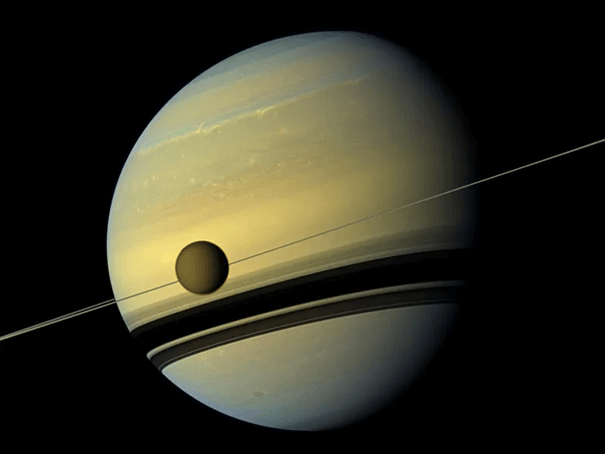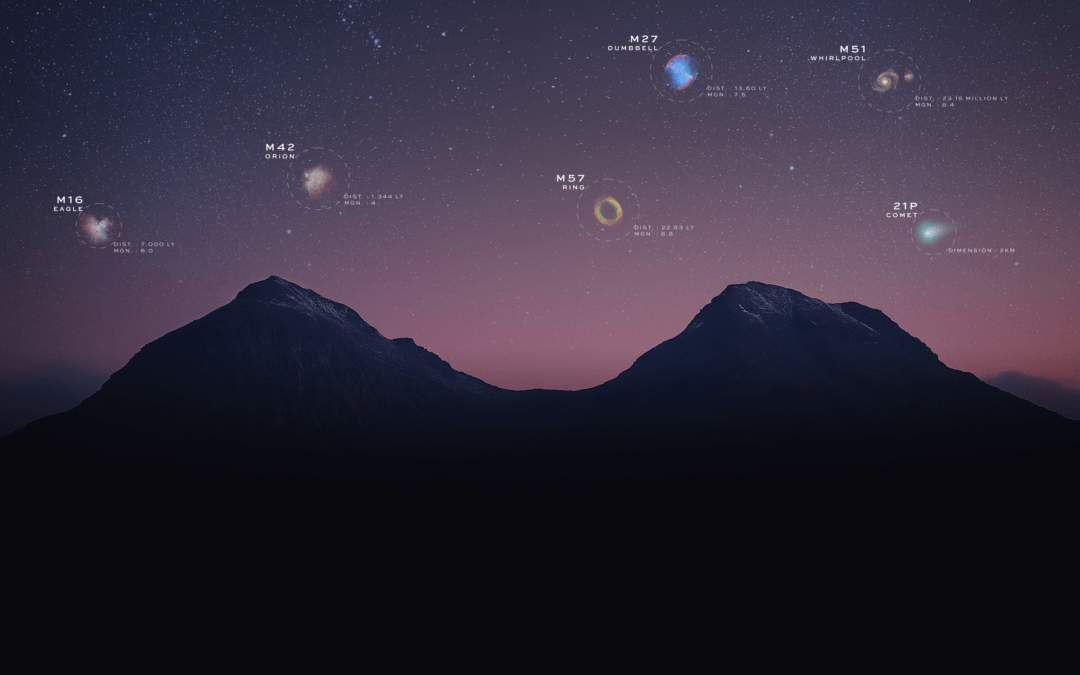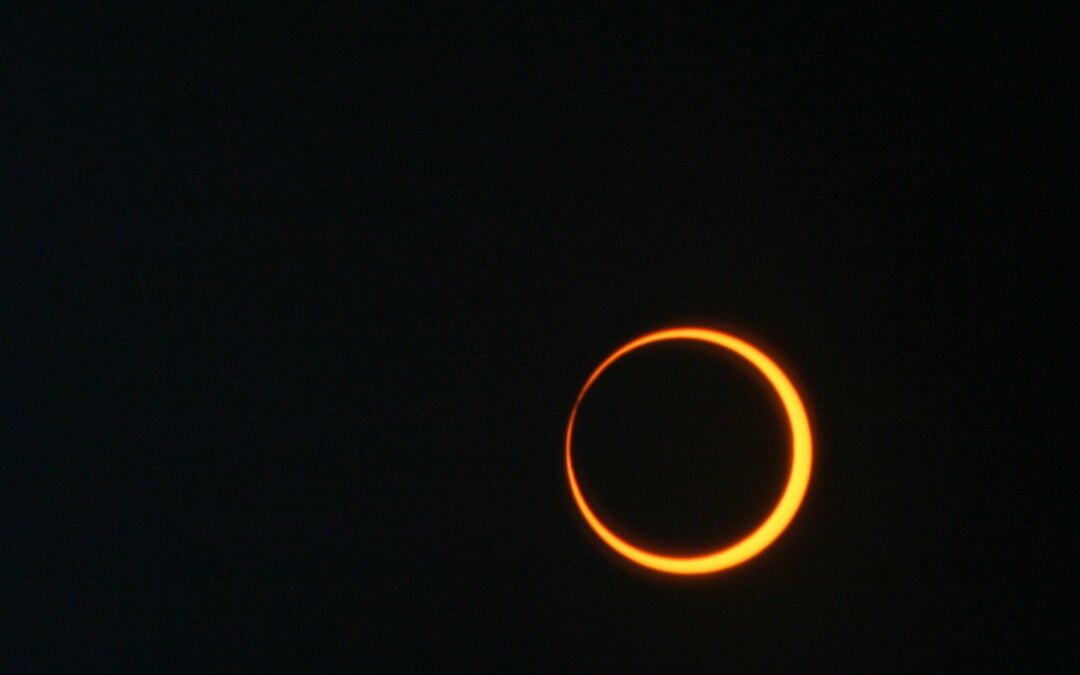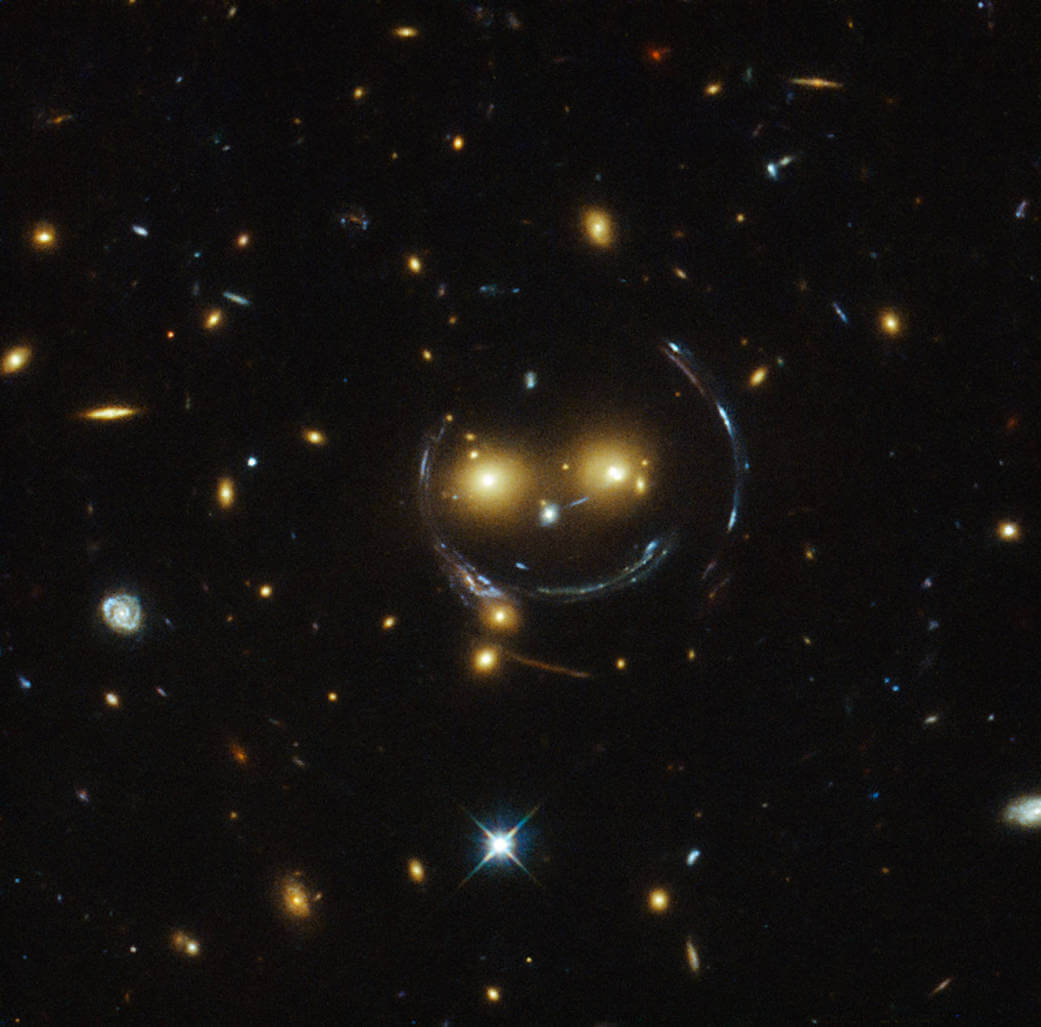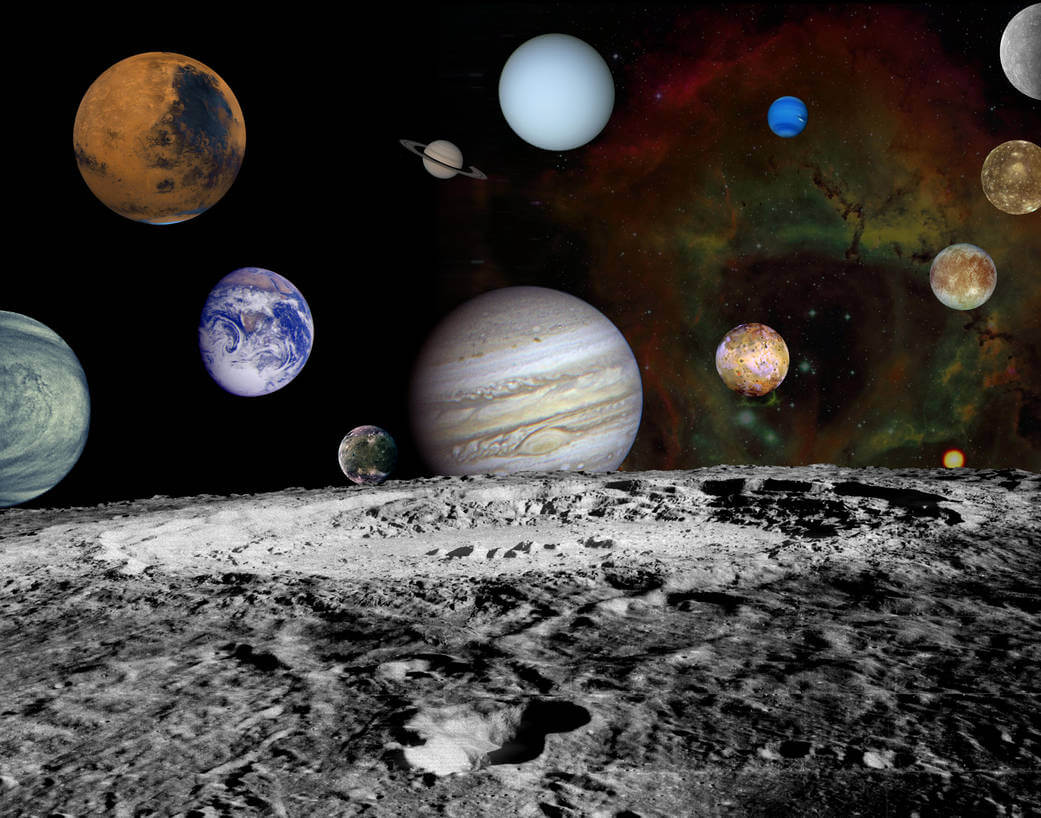As the seasons progress and fresh celestial vistas come into view, there are new and exciting objects to observe that are easy to spot with the Enhanced Vision of your Unistellar telescope. Sparkling galaxies, clusters, and even a small, green alien are waiting for you to discover.
Grab your telescope, find some clear skies and peer into the heavens. Here’s what you might find this month:
Sombrero Galaxy
If you’re skygazing on May 5, Cinco de Mayo might also be the perfect excuse to turn your telescope toward another iconic sight: the Sombrero Galaxy (M104). This spiral galaxy, seen edge-on from our perspective, contains some 2,000 globular clusters filled with tightly-packed stars. May is the ideal time to see the Sombrero Galaxy, which is visible from both hemispheres this month.
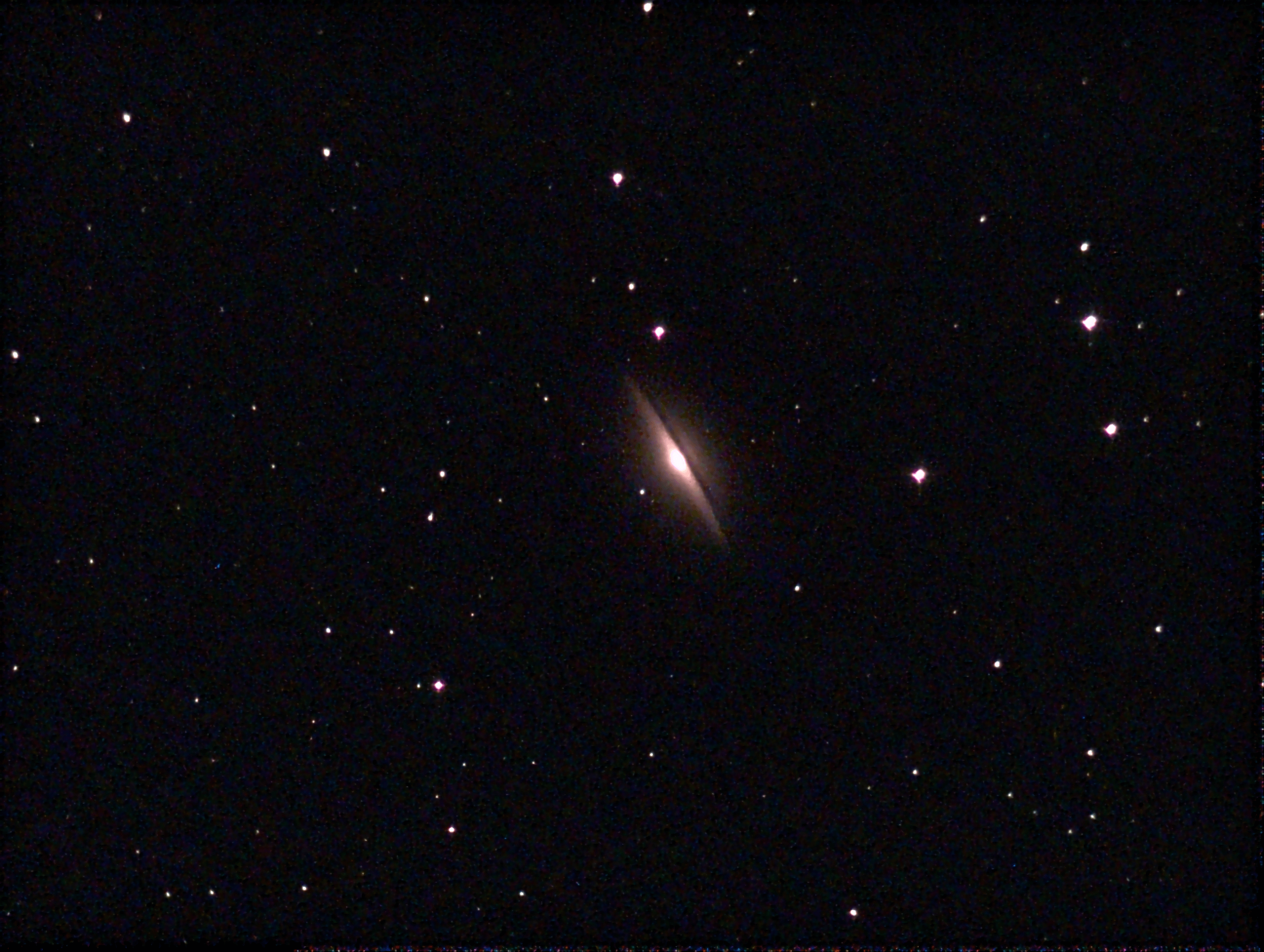
Image of the Sombrero Galaxy captured by a Unistellar eVscope 2.
Penumbral Lunar Eclipse
A penumbral lunar eclipse happens when the Moon passes through just the outer part of Earth’s shadow, or penumbra. The Moon dims, but doesn’t become fully red, making a penumbral eclipse a more subtle event to spot. The upcoming penumbral eclipse on May 5 will move deeper into the penumbra than any other such eclipse for almost the next 20 years.
NGC 2903
This gorgeous galaxy is often considered one of the best and brightest that somehow escaped entry into the famous Messier catalog. It resides 30 million light years away near the head of Leo the Lion, which is high in the early night sky for Northern observers. NGC 2903 is a barred-spiral like the Milky Way, meaning it has a bar-like structure in its center that you can make out with your eVscope or eQuinox!
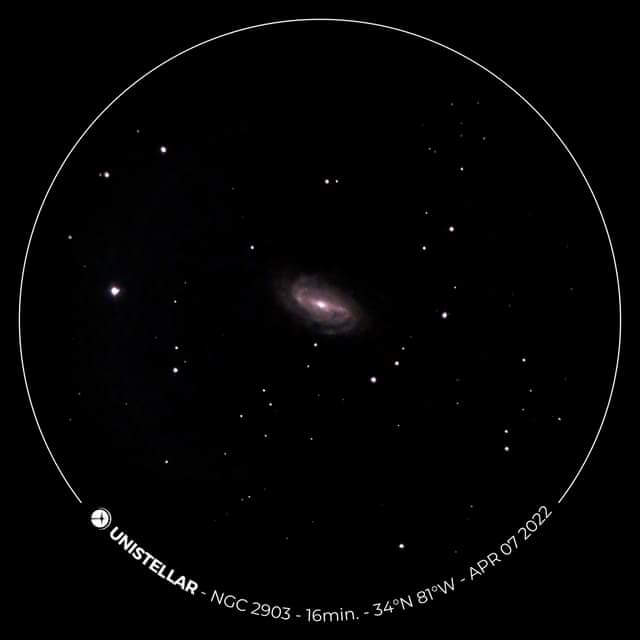
Image of NGC 2903 taken by John Bradley (USA).
M3 Cluster
A bright globular cluster of more than 500,000 stars, M3 resides in the constellation Canes Venatici. It contains more variable stars than any other cluster, meaning its stars change in brightness over time. Check out this stellar sight that’s high in the night sky for the Northern hemisphere (and lower for the Southern)!
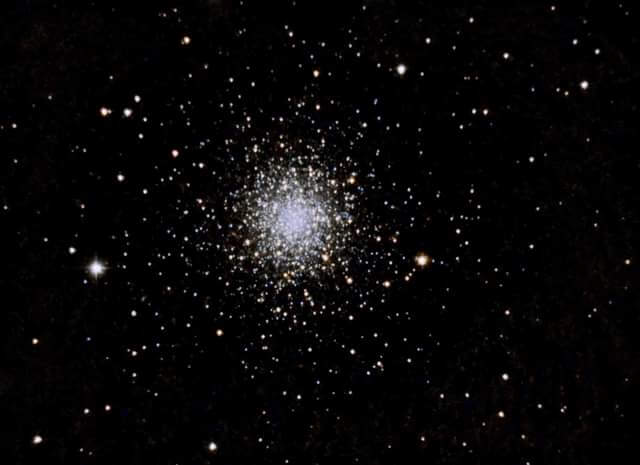
eVscope 1 Image of M3. Taken and processed by Richard Bright (USA).
Whale Galaxy
Also in Canes Venatici, this sea creature in the sky is an edge-on spiral galaxy bursting with star formation. But it is not alone! Sitting above the Whale Galaxy (NGC 4631) is a companion, NGC 4627 – a small, elliptical galaxy. You can see both through your Unistellar telescope!
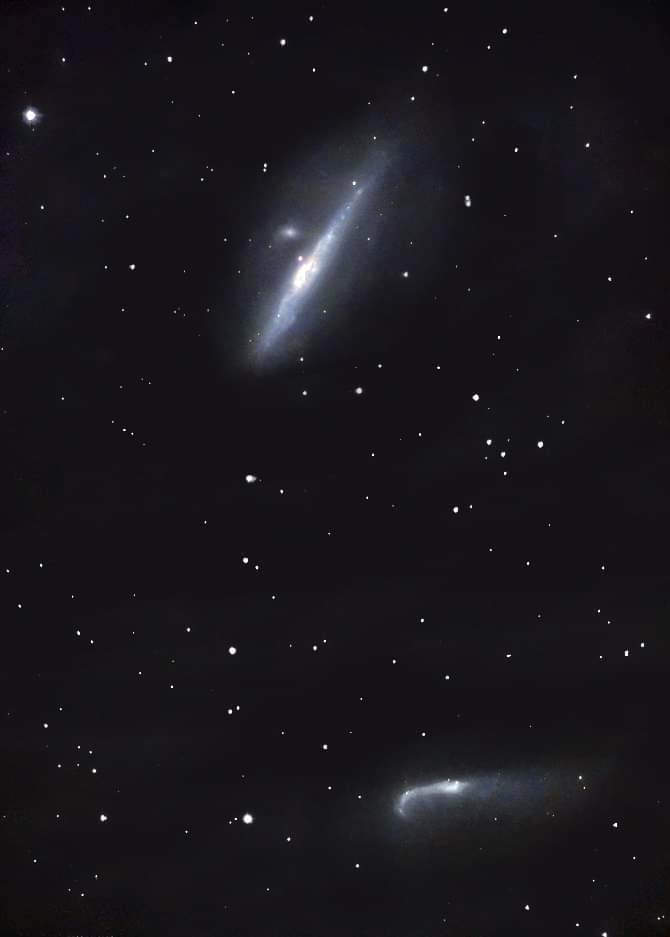
A composite image of the Whale Galaxy and its companion NGC 4627, plus the nearby Hockey Stick Galaxy below! Taken and processed by James Hoffman (USA).
Thor’s Helmet Nebula
The Thor’s Helmet Nebula, also known as the Baby Yoda Nebula, or NGC 2359, is an emission nebula surrounding a hot star. It boasts two wings, or ears, sprouting from its green-tinted center. Mythical headwear or Jedi-in-training? You decide!
This nebula is best viewed from the Southern hemisphere after nightfall and it is fairly dim (11.5 mag), so you may need to observe for at least 10 minutes to get a good image. Join the Unistellar Challenge and look for it on May the Fourth for Star Wars day! Be sure to share your images on social media with the hashtag #UnistellarChallenge.
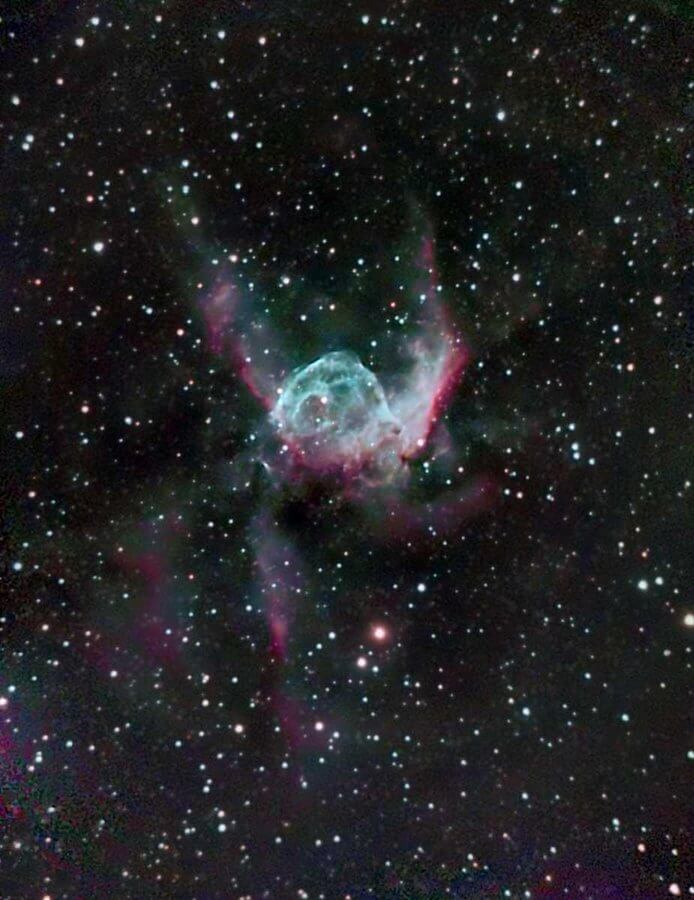
A composite image of Thor’s Helmet, taken by Kevin Wagner and Richard Bright.
We encourage you to share your observations and join the conversation through our Facebook, Instagram and Twitter pages. Don’t forget to tag @Unistellar!
If you’d like to send us your observations by email, send them to [email protected].
Clear skies! 🔭
Further readings
Titan’s shadows
Every month, discover three unmissable celestial events to observe with your Unistellar telescope.
3 Reasons to observe this month
Every month, discover three unmissable celestial events to observe with your Unistellar telescope.
Unistellar Community Included In Multiple Scientific Papers
Did you know Unistellar Citizen Astronomers are often cited in published scientific papers? Find out how you can contribute too!
When Is the Next Solar Eclipse, and How to Observe It With a Unistellar Telescope
An annular solar eclipse is visible from the Americas on October 14. Learn how to witness the Ring of Fire with your Unistellar Telescope!
Halloween Observing Guide: Spooky Deep-Sky Objects
These Halloween deep-sky objects will add some light to those dark, spooky nights. Treats, tricks, and telescopes await!
How Big Is the Solar System?
If the Sun were the size of a basketball, do you know how big the Earth would be? Find out how big the Solar System really is!
